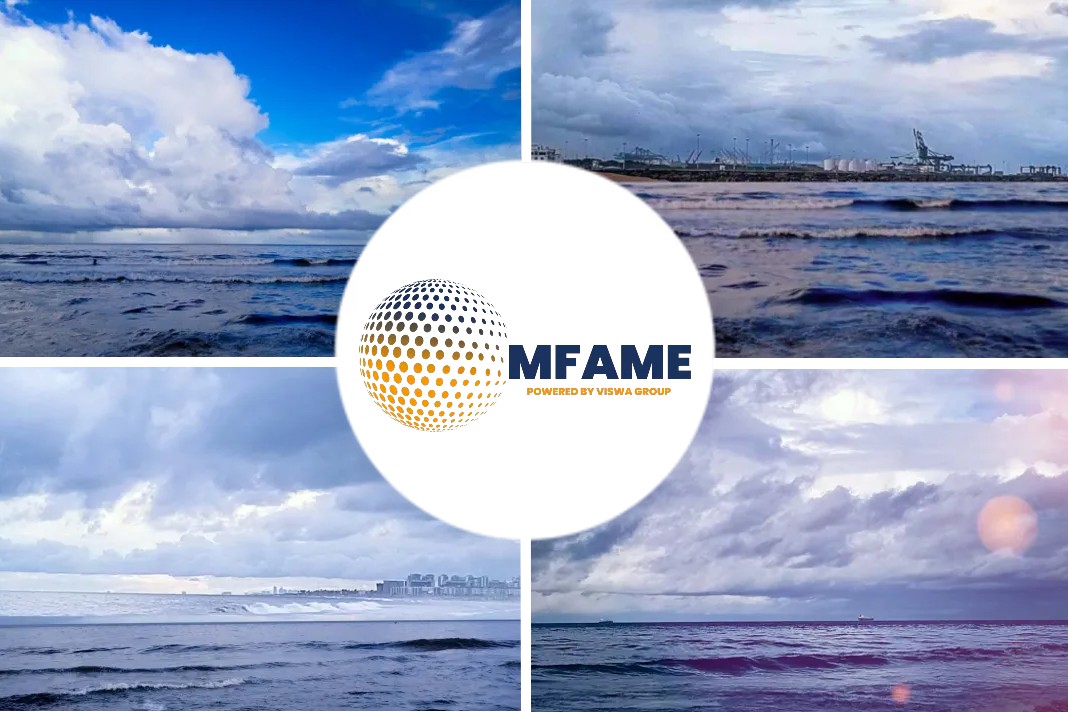Many shipowners have transformed this landmark global emissions regime into a huge competitive advantage, says an article published in Freight waves.
Regulation’s enforcement
Since the regulation’s enforcement date on Jan. 1, 2020, ships have had to use more expensive fuel with 0.5% sulfur content known as very low sulfur fuel oil (VLSFO), or fuels with even lower sulfur content.
The exception: Ships can install exhaust gas scrubbers at a cost of around $2 million-$3 million per ship.
Scrubber-equipped vessels can continue to burn the cheaper fuel used pre-2020 that has 3.5% sulfur content, known as high sulfur fuel oil (HSFO).
Scrubber installations
If the spread between HSFO and VLSFO is wide enough, the fuel-cost savings cover the cost of the scrubber installations and generate profits thereafter.
Shipowners have bought a lot of scrubbers.
And the VLSFO-HSFO spread is now gapingly wide.
High- and low-sulfur
Scrubbers are “paying off in record amounts,” said Jefferies shipping analyst Omar Nokta in a client note Wednesday.
“Several shipowners have disclosed a full payback already of their initial investment.”
Stifel shipping analyst Ben Nolan said this week: “The spreads between high- and low-sulfur fuel have widened dramatically.”
Spreads hit record high in July
The spread initially widened when IMO 2020 was first enforced, as expected.
Then it unexpectedly evaporated after COVID lockdowns hit.
It rose back up as the price of crude increased after the lockdowns ended, then surged in the wake of the Ukraine-Russia war, surpassing spreads in early 2020.
The average price of VLSFO at the world’s top 20 bunkering ports was $369.50 per ton higher than the average price of HSFO on Wednesday, according to data from Ship & Bunker. It reached an all-time high of $420.50 on July 5.
Refueling hub
Spreads at individual refueling hubs have been more extreme than the global average.
In Singapore, the world’s largest bunkering port, the VLSFO-HSFO spread hit $580 per per ton on July 5 and was at $508.50 on Wednesday, according to Ship & Bunker data.
In Fujairah, United Arab Emirates, the world’s third-largest refueling hub, the spread reached $549 per ton on July 5 and was $490 on Wednesday.
Scrubber impacts on tanker and bulker spot earnings
Given the massive amount of fuel consumed by larger ships on long-haul voyages, such spreads are creating huge earnings differentials in the spot market.
In bulk commodity shipping, the ship operator covers the fuel cost in a spot voyage deal, not the cargo shipper.
Clarksons Platou Securities estimated that 10-year-old very large crude carriers (VLCCs, tankers that carry 2 million barrels of oil) with no scrubbers, burning VLSFO, earned the equivalent of $16,200 per day in the spot market on Thursday.
The same ship, with a scrubber, burning HSFO, was paying $22,000 less per day for fuel, equating to a net day rate of $38,400 per day.
Scrubber-equipped
Based on Clarksons’ average breakeven for a 10-year-old VLCC of $28,000 per day, a non-scrubber VLCC is still bleeding cash in the spot market, whereas the scrubber-equipped VLCC is earning 2.4 times as much and is back in the black.
In the dry bulk shipping sector, a Capesize (a bulker with capacity of around 180,000 deadweight tons) with no scrubber earned the equivalent of $22,000 per day in the spot market Thursday, according to Clarksons.
A scrubber-equipped Capesize saved $22,400 per day on fuel, thus netting twice as much: $44,400 per day.
Based on the breakeven of a 10-year-old Capesize of $18,000 per day, a non-scrubber Capesize is pocketing a small gain, a scrubber-equipped Capesize a large one.
Scrubber impact on container shipping
There are also scrubber implications for container lines and their shipped customers.
Container ships with capacity of 8,000 twenty-foot equivalent units or more dominate the two largest mainline trades: Asia-Europe and Asia-U.S.
According to Clarksons data, 46% of container ships with capacity of 8,000 TEUs or more already have scrubbers, with more installations pending.
Of ships 12,000 TEUs or larger, 59% are already equipped with scrubbers.
Bunker adjustment
Cargo shippers with contracts are increasingly paying higher bunker adjustment factors (BAFs) as carriers recoup the rising cost of fuel.
“Most bunker fuel surcharges are linked to VLSFO price,” Vespucci Maritime CEO Lars Jensen said earlier this year.
“This, de facto, means that if a carrier has scrubbers on the vessels and BAFs linked to VLSFO, it is effectively getting paid by shippers for the high cost of VLSFO while at the same time buying the [HSFO] for less and pocketing the difference.”
Two tiers for shipping stocks?
Shipowner stocks don’t traditionally trade based on management strategy.
Shipowner equities are widely seen as commoditized plays on the underlying transport demand.
However, some analysts maintain there could be more differentiation going forward. Companies with scrubber-equipped ships and/or vessels built in the last decade with more fuel-efficient designs could pull away from the pack.
Eco-design ships
“Those companies with exhaust scrubbers, particularly on larger ships, should outperform as the market becomes more bifurcated,” Nolan said.
He believes Scorpio Tankers (NYSE: STNG) and DHT (NYSE: DHT) are the best positioned among public tanker companies to gain from scrubber installations, with Star Bulk (NASDAQ: SBLK) and Safe Bulkers (NYSE: SB) best positioned on the dry bulk side.
According to Nokta, “Historically, investors have seen little differentiation in company fleets, but that is changing. Those companies with a heavier focus on modern, eco-design ships [and/or scrubbers] are likely to see a premium valuation … due to the visibly strong outperformance they are now capturing. There is a widening divergence in company earnings power depending on the equipment on hand.”
Did you subscribe to our daily Newsletter?
It’s Free! Click here to Subscribe
Source: FreightWaves
























